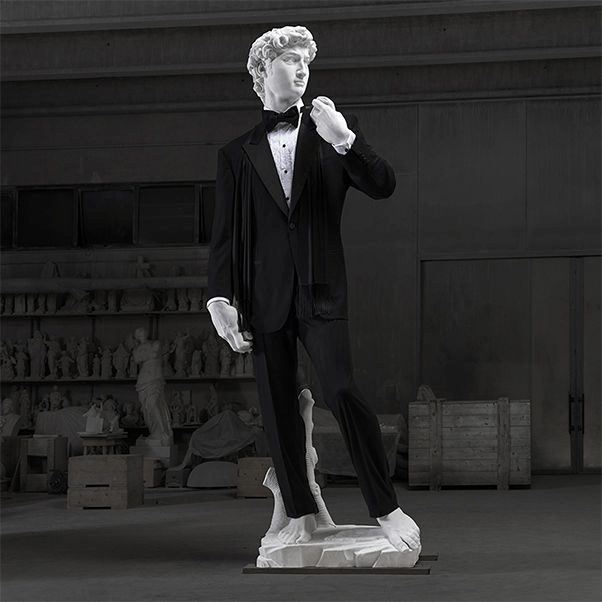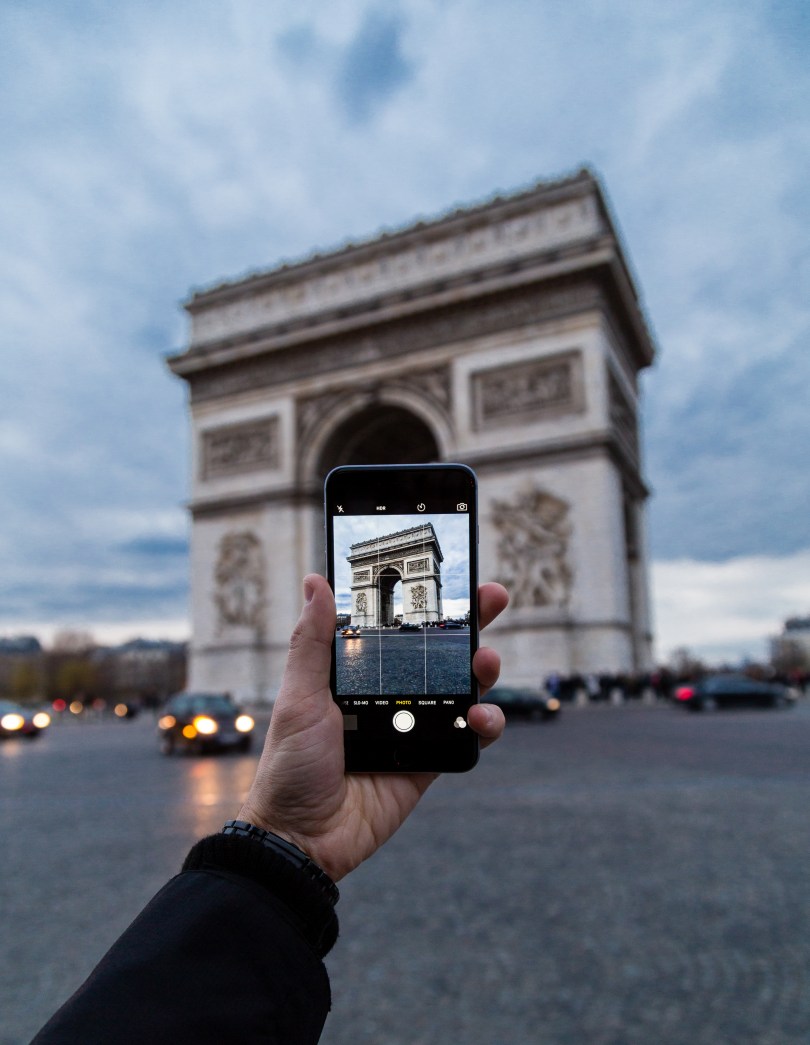Affectionate readers of this blog will already be familiar with the Italian rules on the reproduction of cultural heritage as well as with two 2017 Court decisions that dealt with unauthorized reproductions of, respectively, the Teatro Massimo of Palermo and the David by Michelangelo (see here) (for an earlier dispute over a controversial picture of the David “bearing arms”, see here).
Among the many Italian public entities having the right to authorise the reproduction of their cultural heritage assets, those having rights on the David by Michelangelo in particular seem to be the most aware of their prerogatives, as in early 2019 the Court of Florence was called to rule on yet another case involving this Renaissance masterpiece (the full decision is available here).
The facts of the case are rather simple: Brioni, a prestigious Italian menswear couture brand, launched an advertising campaign (consisting of a video and some pictures) centred on a full-scale marble replica of the David by Michelangelo wearing a tailor made suit from Brioni’s couturiers.

The replica had been manufactured by an Italian sculpture workshop in 2002 and then used for a couple of other projects before being lent for free to Brioni for their campaign in 2018.
The Italian Ministry of Cultural Heritage and Activities started urgency proceedings before the Court of Florence against both Brioni and the workshop asking, inter alia, for an interim injunction against the use of the David’s image for profit purposes.
Upon commencement of the proceedings, the advertising campaign was immediately withdrawn, and the sculpture workshop undertook not to further use the replica for future events without the Ministry authorization.
The Court to Florence therefore rejected the petition for interim relief on grounds of lack of urgency. That said, in a meaningful obiter dictum, the Court briefly touched upon some of the substantive issues that were at stake.
According to the Court, among these issues were in particular (i) “the exact scope of the concept of “reproduction” [and] of its object pursuant to Articles 106-108 of the Code of Cultural Heritage”; and (ii) whether the contested use of the David constituted a “creative re-elaboration” pursuant to Art. 4 of the Italian Copyright Law – rather than a reproduction. The Court of Florence did not provide an answer to those questions; but the very fact that the Court felt the need to mention them, made it clear that the answer would have been far from obvious.
The first of these issues appears to be of capital importance and is arguably linked to the second one.
The scarce case-law that dealt with cases of reproduction of Italian cultural heritage seems to have taken it for granted that the notion of reproduction pursuant to Art. 107 of the Code of Cultural Heritage could be borrowed from copyright law.
This was in fact confirmed in 2013 by the Court of Cassation, which in a case involving the sale of replicas of the fossilized skull of a Neanderthal (the Altamura Man – see picture below), ruled that, in principle, “it is indeed possible to refer to the provision of copyright law that defines the concept of reproduction”, i.e. Art. 13 of the Italian Copyright Law according to which “the exclusive right of reproduction concerns the multiplication of copies of the work in all or in part, either direct or indirect, temporary or permanent, by any means or in any form, such as copying by hand, printing, lithography, engraving, photography, phonography, cinematography, and any other process of reproduction” (Italian Court of Cassation, decision no. 9757/2013).

Eventually, however, the Court of Cassation concluded that no reproduction had taken place in that case, because the replica had been created without reproducing the actual shape of the skull (which was for the most part embedded in a cave and therefore not even visible), but with “an hypothetical reconstruction, based on a series of scientific findings and reconstructive hypotheses, of what could be the entire cranial structure”. According to the Court of Cassation, this resulted in “a new work which, as such, is the subject of autonomous protection under copyright law”.
It seems possible to read the Court of Cassation decision as follows: where a given cultural heritage asset is not literally copied but independently recreated in the context of a new creative work, this does not constitute a reproduction pursuant to the Code of Cultural Heritage.
Indeed, it has been noted that “the copies obtained by a specific (moulded) impression of the original piece are reproductions, and the ones obtained by a free sculpting or shaping operation (creation) represent different actions. In the latter case, the work is certainly closer to an independent artistic action than to a copying act. Digital models share the same difference: any digital 3D model may be the result of the reproduction of an existing object (through laser scanners or the process of photogrammetry), or the result of a modelling (creation from scratch) operation (see here).
In this perspective, in the 2019 Court of Florence case, Brioni had defended itself by claiming that the advertising campaign did not reproduce the original David by Michelangelo, “but rather a different asset, created by a sculpture workshop, in combination with a tailor’s work”.
Plainly transposing copyright law notions into cultural heritage law could have spiralling consequences. Especially if one considers that the Code of Cultural Heritage also provides for criminal penalties against “anyone who, in order to profit from it, […] reproduces a work of painting, sculpture or graphics, or an object of antiquity or of historical or archaeological interest” (Art. 178).
Should Matt Groening be jailed for up to 4 years? (Matt Groening being the creator of the animated TV series “The Simpsons” where the following image comes from).

Probably not. In fact, in regard of this criminal provision, the Court of Cassation has been more categorical: “reproduction shall mean copying the work in such a way that the copy can be confused with the original” (Court of Cassation, decision no. 29/1996).
Mr. Groening can breathe a sigh of relief, this time (criminally speaking, at least).
Another related issue, which to our knowledge has not been expressly tackled by case-law yet, is whether the Code of Cultural Heritage provides for an exclusive negative right, allowing rightsholders to prevent any third party from reproducing its subject matter (again, just like copyright law) or merely for a right to a compensation in case a reproduction takes place (as maintained by POJAGHI, Beni culturali e diritto d’autore, Dir. aut., 1/2014, 153).
Policy considerations could suggest the latter. In the vast majority of cases, cultural heritage assets are part of the public domain (at least in a copyright perspective). Why leave it to the unquestionable discretion of various public entities to authorise their reproductions? Shouldn’t rightsholders at least prove some kind or reputational damage to stop the unauthorised use of a given reproduction?
It has also been argued that, the Code of Cultural Heritage being a text of public law, the only possible consequences in case of a violation of its provisions would be administrative sanctions – not injunctions or other remedies typical of intellectual property law (see here).
In the past, the Court of Florence seems to have – perhaps too hastily – borrowed from the copyright/IP regime of remedies. Specifically, it did not hesitate to issue a (pan-European) interim injunction against the unauthorised photographic reproduction of the David by Michelangelo in the promotional materials of a travel agency. This was done on the grounds that “the indiscriminate use of the image of cultural assets is liable to diminish their attractiveness” (which is particularly counterintuitive, considering that the travel agency was using the materials to promote guided visits to the actual David). Furthermore, it also issued additional – and rather afflicting – orders of withdrawal of all the promotional materials from the market, destruction of those materials, destruction of all instruments used to produce or market those materials, publication of the decision on several national newspapers and magazines, as well as online, and – for every single order – very high penalties in case of non-compliance (see the 2017 decision mentioned at the beginning of this post).
The Court of Milan, on the other hand, has proven to be more cautious. In a 2015 case involving the unauthorized photographic reproduction in e-books of a number of drawings from the Fondo Peterzano (which is part of the Italian cultural heritage), it ruled that “in the absence of any appreciable prejudice deriving from the publication of the reproductions, […] the request for an injunction from further commercialisation must be rejected” (see here).
All in all, the interpretation of the Italian rules on the reproduction of cultural heritage is not 100% clear yet, but the increasing awareness of the subject by public entities will most likely lead to other disputes in the near future, which could shed more light on this topic.
Emanuele Fava – Nicoletta Serao
Court of Florence, 2 January 2019, MIBAC vs. Brioni S.p.a., case Docket No. 15147/2018



